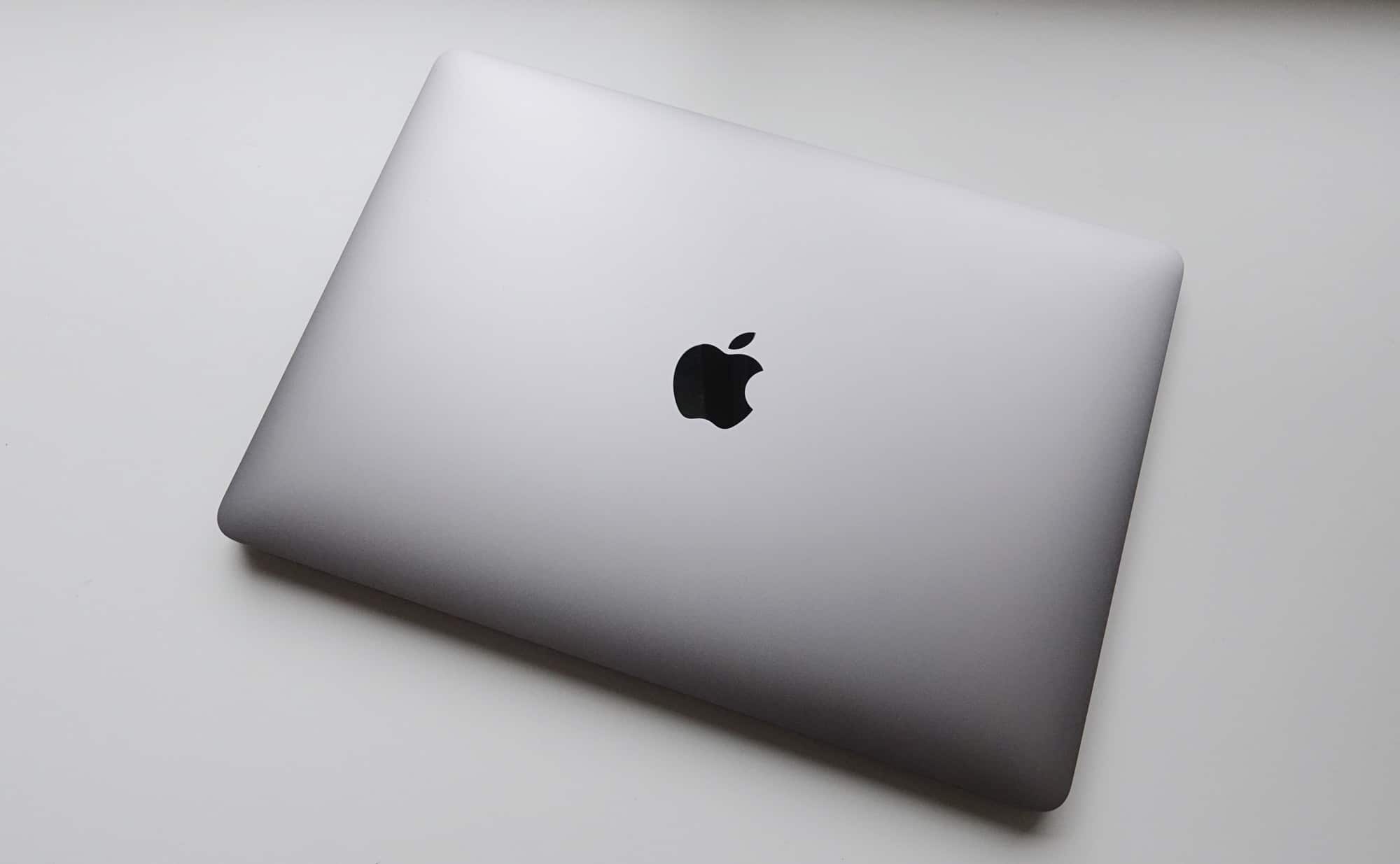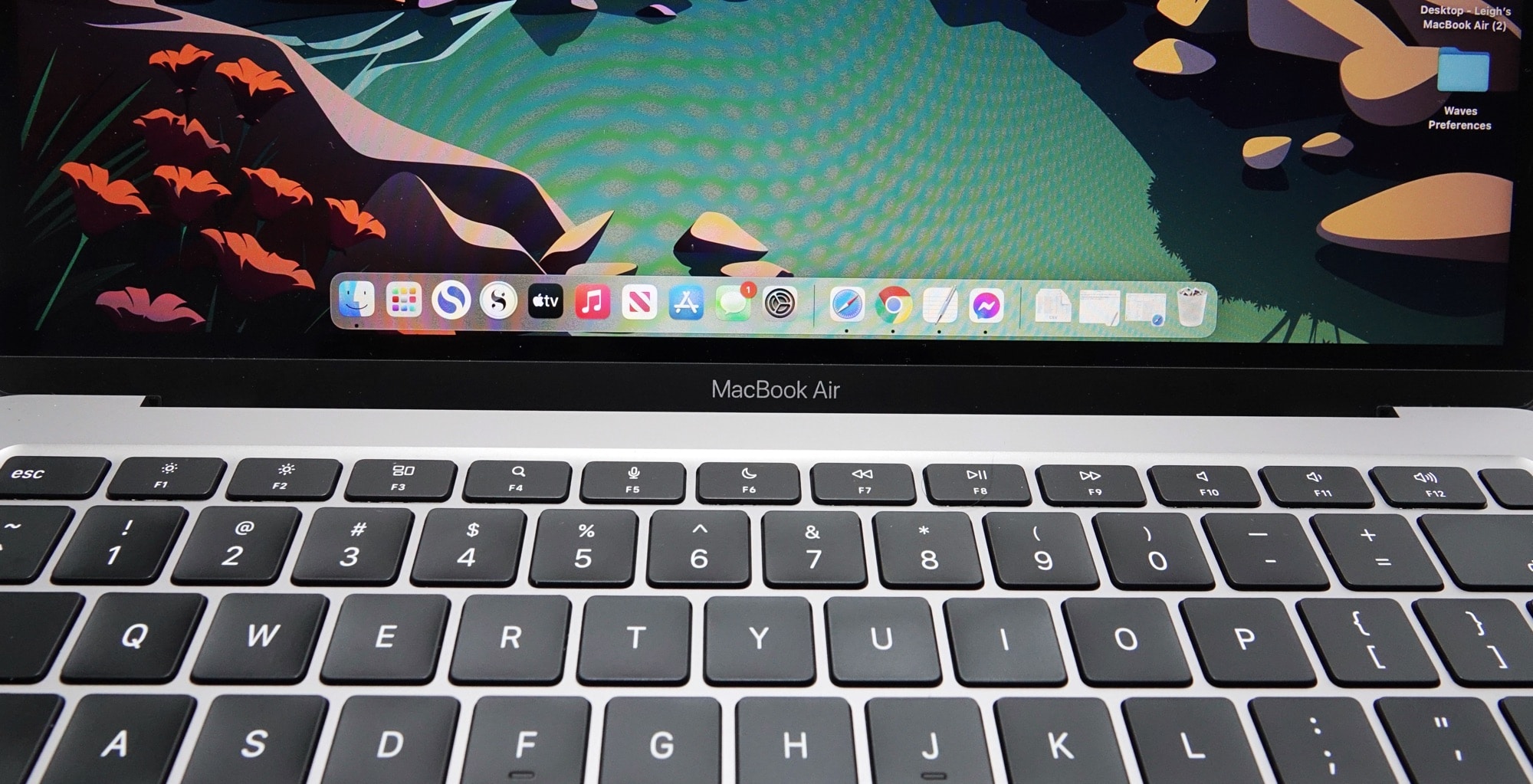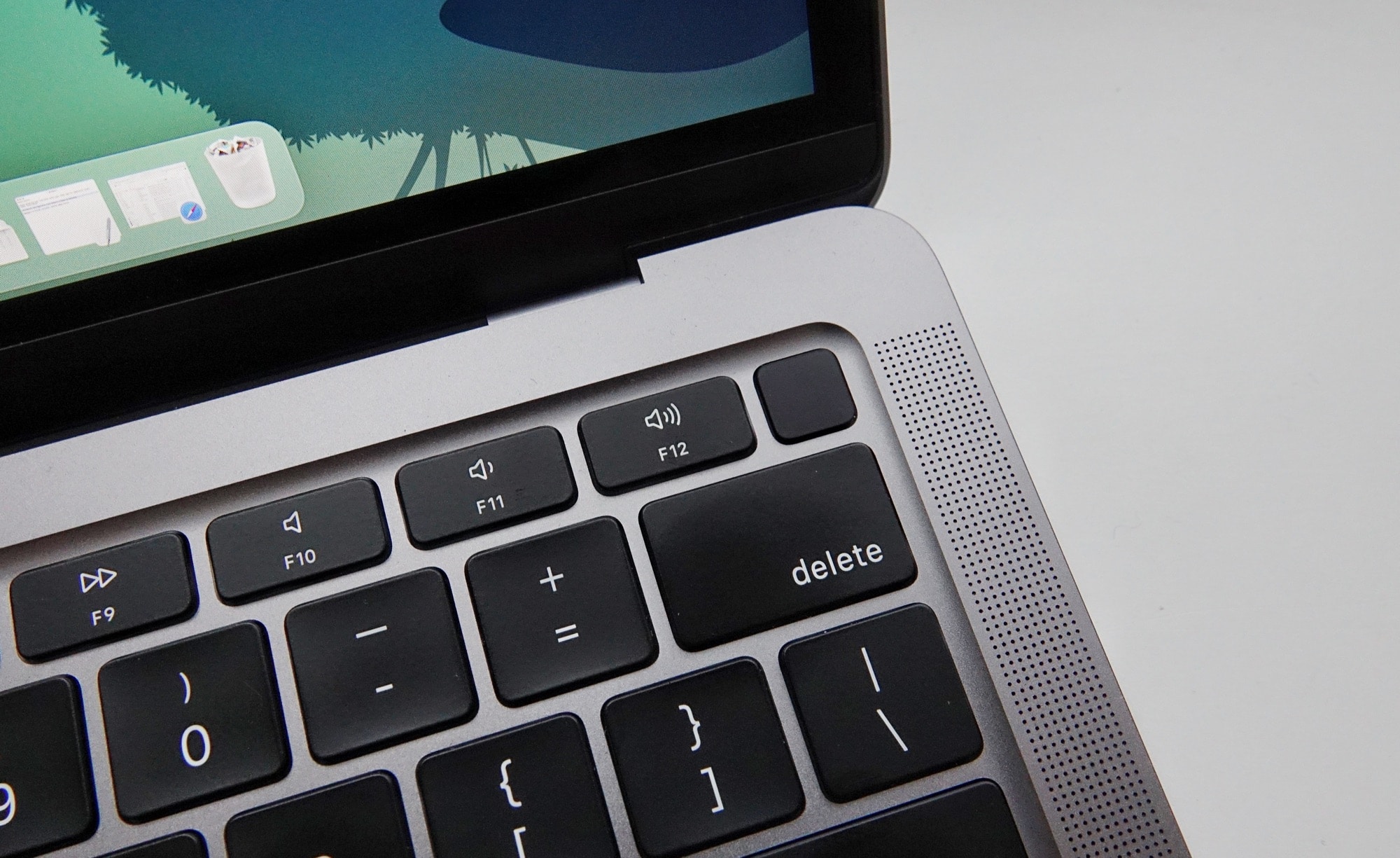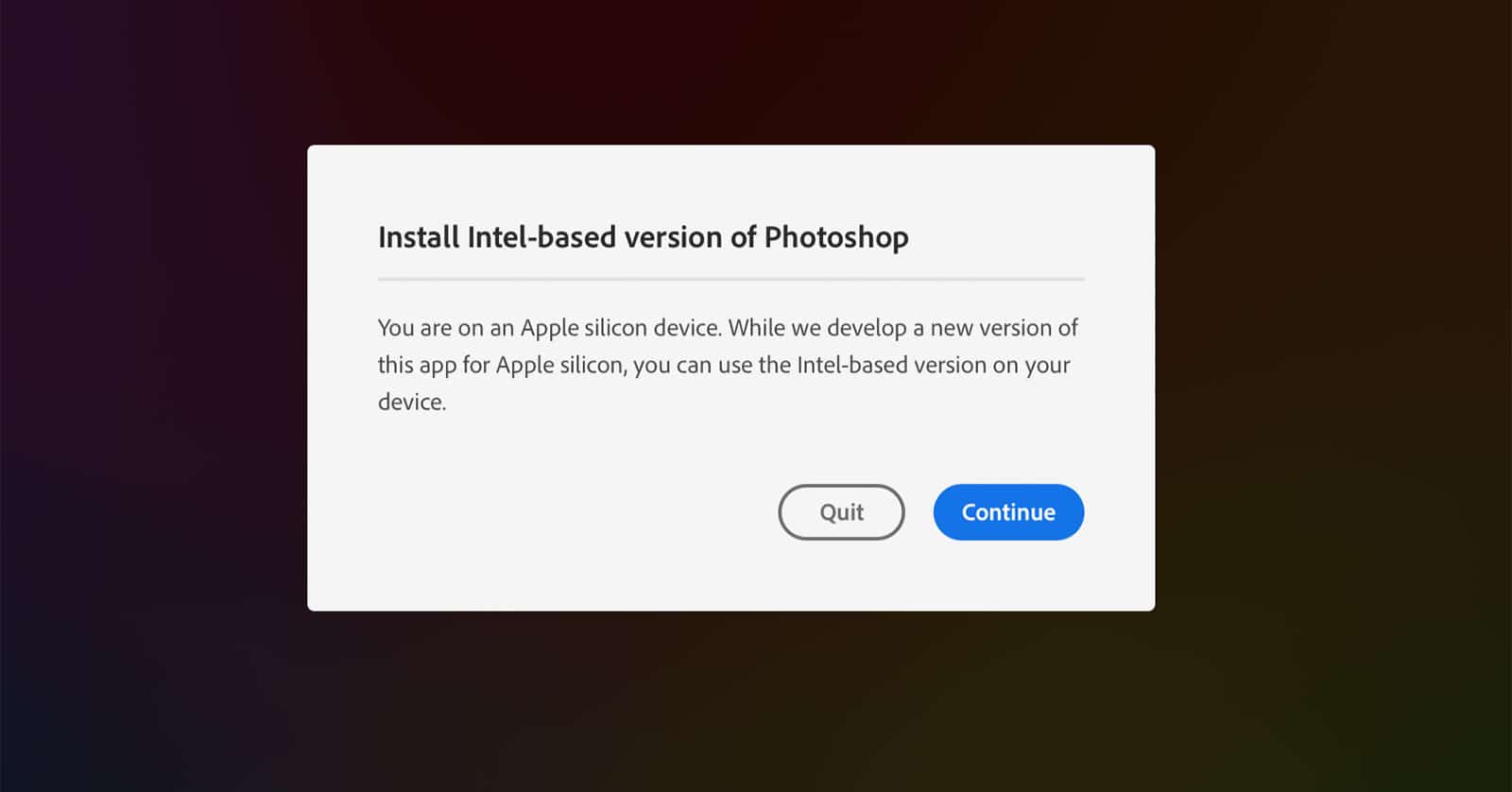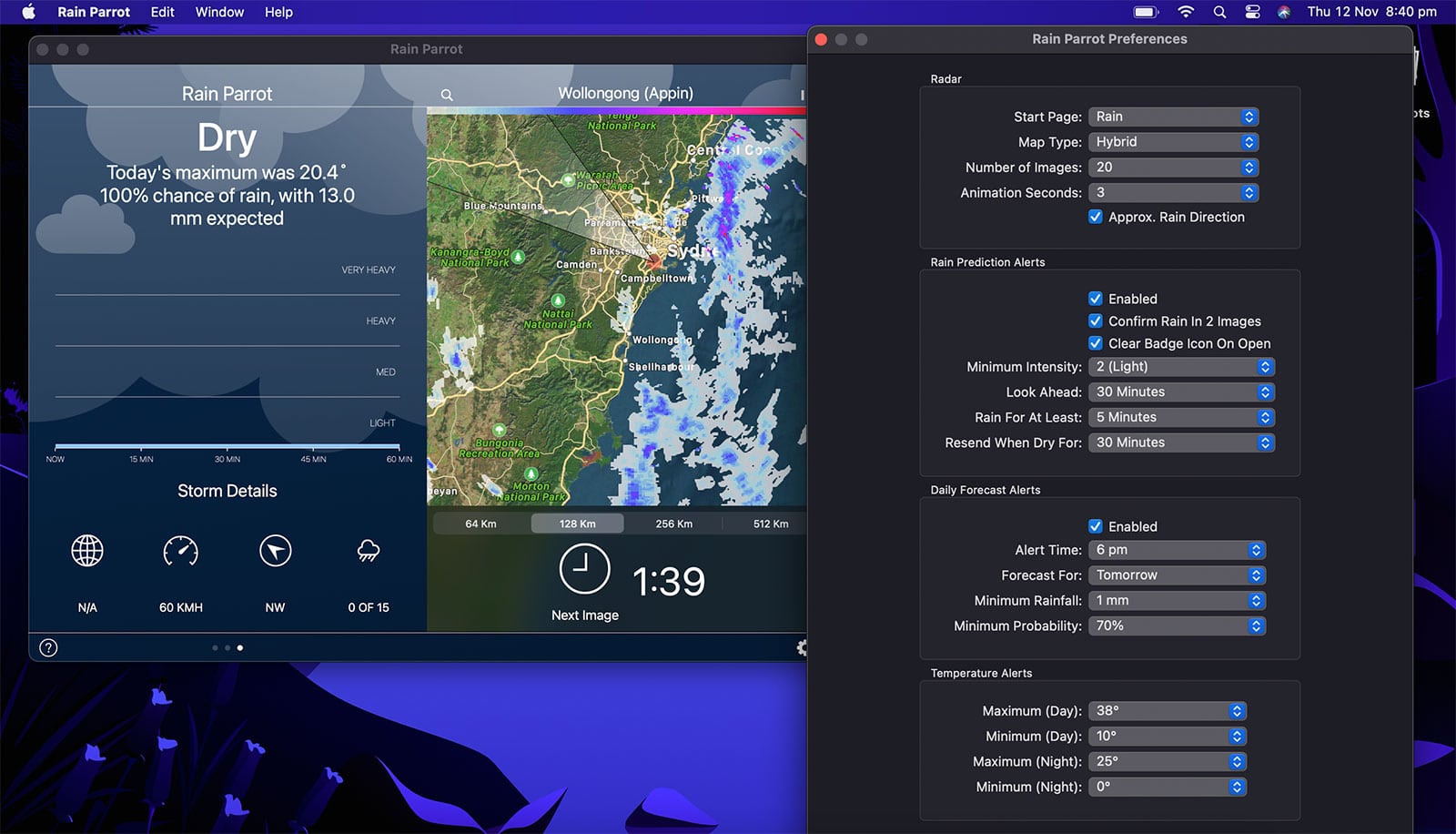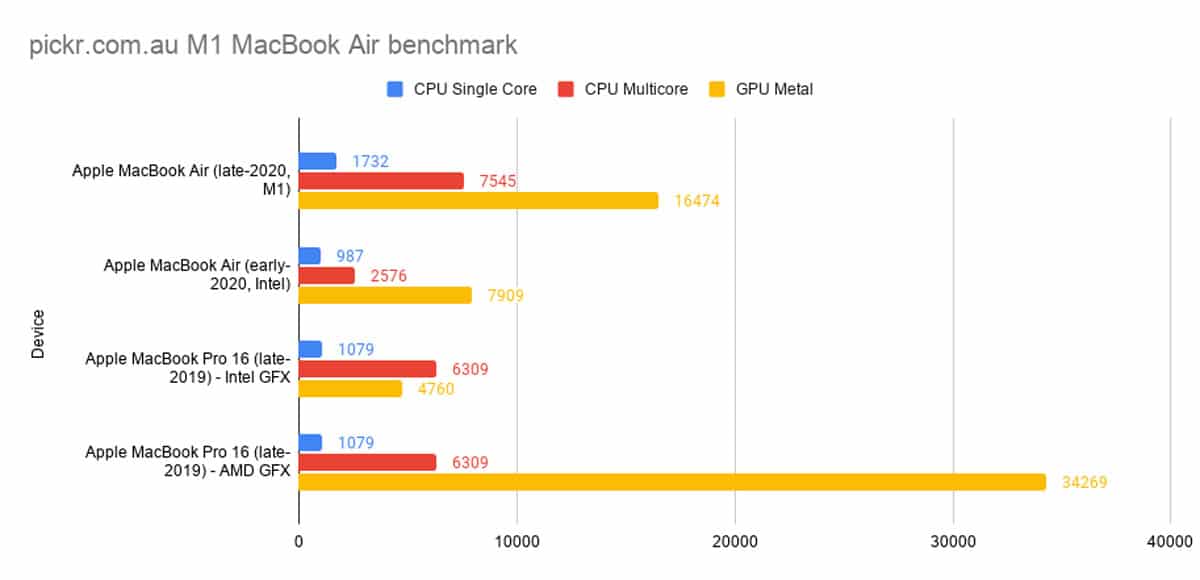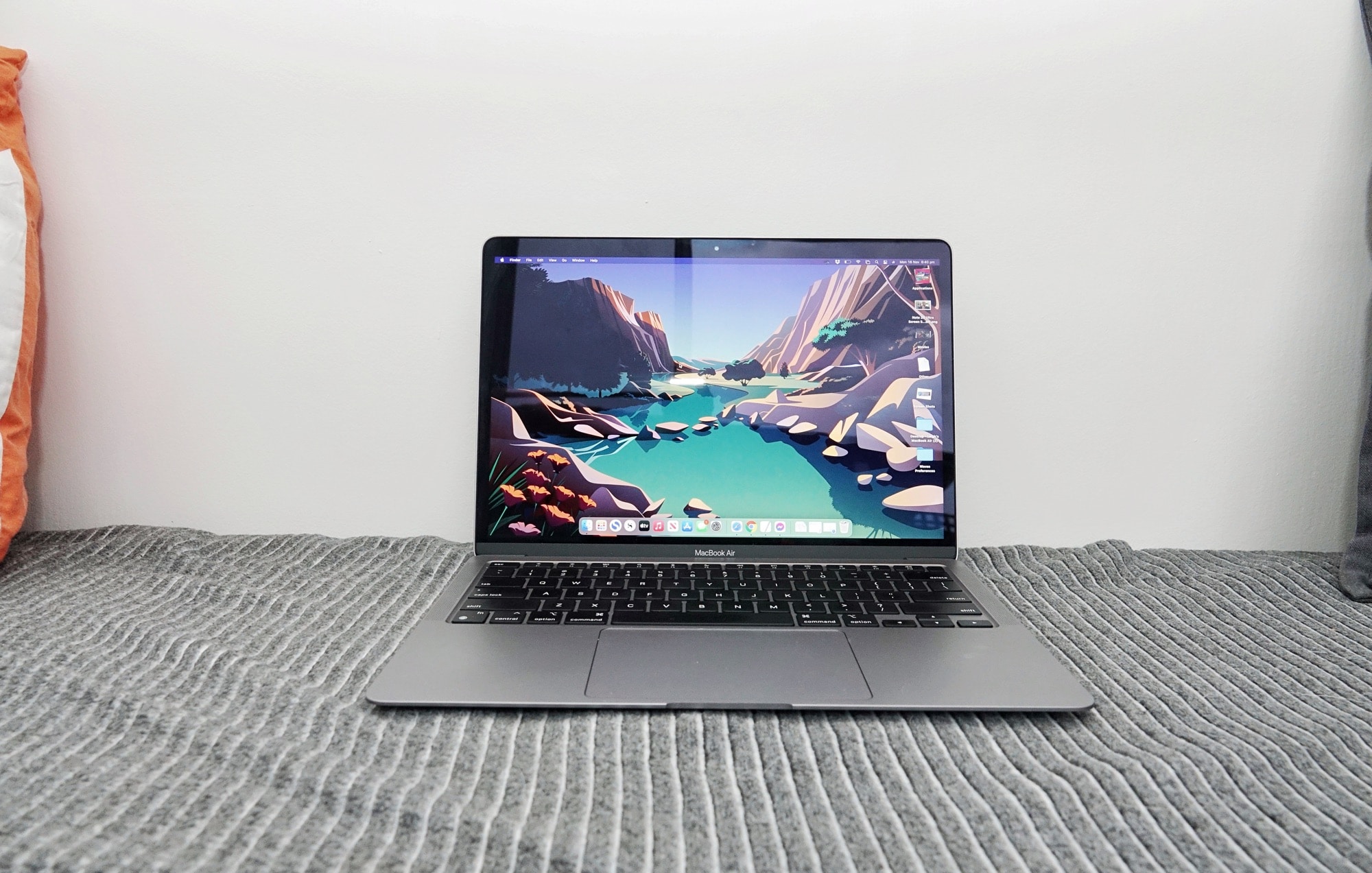Quick review
The good
The not-so-good
There’s a new breed of Mac in town, and it comes with Apple’s first laptop chip. Is the M1 MacBook Air one of the best yet?
There’s a new Mac in town, and it’s something else entirely. Sporting a new chip that can deliver more performance and battery life, the late-2020 MacBook Air is a totally different Mac that looks just like the one released earlier in the year. And while the design is spot on, it just might be the best laptop all year.
What’s new in this new breed of MacBook Air, and what does it do differently? And perhaps most importantly, is the new MacBook Air worth your time and money?
Design
Apple’s brand new M1 MacBook may be something new and exciting to end the year with, but you’d never know it looking at it. Rather than sport some slick new design, Apple has left things where they are, probably because the MacBook Air is solid and stylish as it is.
Sporting the thin metal body with that angled design we’ve grown rather fond of from previous Air models, the M1 MacBook Air looks just like the Intel MacBook Air, from top to tail to keyboard and more.
Honestly, you’d never know you were looking at a different machine until you looked at the spec sheet and plunged deeper.
Features
While it might look the same as the MacBook Air models we’ve seen since its reinvention in 2018, the late-2020 Air has a totally new heart, beating with the first generation of Apple’s silicon for computers, the M1 Apple processor.
Like the A14 Bionic in the iPhone 12 range, it offers processing, graphics, and a neural engine, but there are more cores here, which means more power overall.
The M1 is also very different from the Intel hardware we’ve seen in the Air previously, though it’s clocked at a high 3.19GHz.
There are two variations of M1 Air you can find, with a 7 core graphics model at $1599, while the 8 core costs $1949 in Australia. For the purposes of this review, we’re checking out the 7 core model.
Regardless of the model you buy, it’s coming with 8GB RAM, with Apple using “unified memory”, a term that basically says Apple is sharing the memory between the main processing and the graphics, no separate RAM for each here.
You do get a choice of solid-state storage size, with either 256GB or 512GB SSD in the M1 MacBook Air, and every version comes with 802.11a/b/g/n/ac/ax WiFi 6, Bluetooth 5, two Type C Thunderbolt 3 ports that also offered USB connectivity for charge and data, and that 3.5mm headset port folks might still rely on.
A fingerprint sensor can be found in the keyboard, and a FaceTime HD camera above the 13.3 inch screen, the latter of which supports Apple’s white-balancing True Tone technology.
Display
That display hasn’t changed much from what we saw earlier in the year, though that’s not a bad thing.
You’ll still get the 13.3 inch display sporting the resolution of 2560×1600 that you did before, capable of crisp visuals that achieves a friendly tone for your eyes that changes based on the white balance of the room. It’s one of those features that is supremely helpful and means the blue light normally emitted by screens feels less dramatic, allowing you to work in different lighting conditions more comfortably.
This is great, but it’s not a shift in what’s new. For that, you need to look a little deeper, and go beneath the keyboard, looking under the bonnet of the beast, which is where the changes are.
In-use
With everything under the hood that makes the late-2020 MacBook Air special, using it is more or less identical to using any other Mac.
In fact, it looks pretty much identical to the MacBook Air that came out earlier in the year, complete with the same scissor-switch keyboard, something Apple calls a “Magic Keyboard”, and returns Apple’s long-famed excellent keyboard to the mix. Offering easily enough travel and a solid press to every key, the MacBook Air keyboard is up there as one of the greats.
Paired with a spacious trackpad and a fingerprint sensor, the whole thing comes together as easy to use, and part of that might be from the operating system, as well.
You’ll find macOS Big Sur on the M1 waiting for you out of the box, and it’s an operating system that has been tweaked and built with the M1 in mind, though there is clearly still an Intel version for just how many Macs have Intel chips inside.
If you’ve not seen it, Big Sur tweaks the macOS experience so that it feels a little like as if iOS on the iPhone and iPad had merged with the Mac environment, and it works a charm. Delightfully softened icons, more obvious power controls in the top right corner, and a widgetised notification bar not unlike what iPhone and iPad users see. We’ve heard the complaint over the years that people might want to see an iPad with macOS, and while this isn’t it, Big Sur treads a very fine line that achieves something near it.
But Big Sur and the Apple M1 also does something else, because that new chip means old apps might not play nice. Apps made for macOS using Intel may not work as well as apps made for macOS using Apple’s Silicon, starting with the M1 chip, and that would normally be a problem, but Apple had thought this through.
Long-term Apple users will remember a transition period where apps had problems in the past, back in 2006 when Apple transitioned from the PowerPC chips to the Intel chips they’ve been using. In 2020, some 14 years later, it seems that Apple has learned, and is ready with a system that makes amends by making apps new and old come together.
That means the M1 MacBook Air, alongside the M1 MacBook Pro and M1 Mac Mini, can deal with apps differently, and in some ways you might not expect.
Specifically, the late-2020 MacBook Air plays nicely with three different styles of apps: universal, Intel, and iOS.
Mac Universal apps

The main style of app is one that comes through the Mac App Store, known as “universal” apps. Specifically, it means an app designed to work both with Intel’s chips and Apple Silicon, namely the M1 and anything in the future.
At the launch of the M1-enabled MacBook Air, universal apps are basically the apps made by Apple — Safari, Final Cut Pro, Logic Pro X, GarageBand, Pages, and so on — and a few others that developers are gradually jumping on. They’re the apps made to work across two styles of Mac, with the old ones we all have plus the new ones being released.
In the future, they’ll all be universal apps, but right now, it’s a gradual transition as developers get on board.
For the moment, if you rely on Apple’s own apps, you get a faster variation that can take advantage of what the M1 can offer, with speed aplenty and stability.
Safari was fast and felt marginally faster, as if tabs were just ready in an instant. Pages, Number, and Keynote didn’t take more than two seconds to load and were good to go so quickly, and it was much the same with News, Home, and other apps, too.
But if you’re like us and still use apps not made by Apple, such as Chrome, Steam, the Epic Games launcher, Photoshop, and such, you need to rely on a different type of app, because not everything has been converted to a universal app. Not yet.
Intel apps
Apps made to work on the older style of Mac are Intel apps, and while they run on the M1 MacBook Air, they’re not made to take advantage of chip’s instructions the same way that universal apps are. Rather, they’ll run with a translation system, Apple’s Rosetta 2, which basically runs in the background after installation allowing Intel apps to execute.
Intel apps can’t run like the universal apps, which are made to work across whichever chip your Mac has. Eventually, this won’t be an issue, and Apple will have transitioned folks to full Apple Silicon sometime in the next decade, but for the moment, it’s a factor.
However it’s a factor you don’t have to worry about, with Rosetta allowing apps not on universal working here quickly, and sometimes faster than how they run on the equivalent Intel MacBook Air.
It’s rather surprising to see Apple achieve this, but Photoshop loads quickly alongside Premiere and After Effects, and even the games can execute well. And it’s not just the creative apps that’ll run under Rosetta, but pretty much everything that doesn’t have the right instructions for Mac Silicon, including some of the apps on the App Store.
For instance, the writing app we regularly use, SimpleNote, was available for the M1 via the App Store, but didn’t run until Rosetta 2 was switched on. Other apps that you might use including Dropbox and Chrome also need Rosetta, and mean Apple’s new technology doesn’t have to go through the same teething issues it did during the days of the Intel conversion.
The good news is it’s not just apps that this applies to, but also games.
You see the technology used with the M1 is the same across the MacBook Air and MacBook Pro, with the difference being the thermal output, and how much Apple reigns it in based on maximum output. That means the chips are shared between the regularly high-power MacBook Pro and the MacBook Air, the latter of which is usually somewhat less. However that means apps like Steam can run, and maybe even some of the games inside of it, which we decided to test.
While the browsers inside Steam and the Epic Games Launcher can sometimes feel a touch sluggish, the game performance is anything but, and Apple has built a thin and light machine capable of handling games from the popular gaming platforms.
It’s not always perfect, you may find the odd spot of lag, but the Rosetta-run Steam games do run, and run well, with the only major flaw being the required 64-bit execution, meaning some games don’t work. Neither Portal 2 nor Homeworld worked on our M1 MacBook Air review unit (because they’re 32-bit, not 64), but Tomb Raider did, and quite well.
In fact, at 1920×1200 with the visuals up, it saw a benchmark of around 60fps. That was on the entry-level M1 MacBook Air, by the way, the option with 7 GPU cores, not the eight found in the higher end model. Not too shabby for a computer that isn’t made for games.
Pushing that just a little bit more with Fortnite, we found frame rates of between 24 and 38 frames per second in games for full-screen, though exiting the game did cause a bit of crash, blanking out on a black screen and not bringing back the Mac to life.
Clearly, it’s not quite perfect, but the M1 MacBook Air is a machine that can game, and that’s surprising given that it’s clearly not built with that in mind.
Rather, it’s a Mac for all, made with versatility in mind because just how much it can do. While the performance between Intel and universal apps is easy to acknowledge, there’s another style of app you mightn’t expect, but it’s a big factor here: iOS apps.
iPhone and iPad apps, too
You might be reading this MacBook Air review with some trepidation, wondering why we’re touching on iPhone and iPad apps for what is clearly a computer review, but that is what’s being offered in the M1 MacBook, and indeed the M1 MacBook Pro and Mac Mini: support for iOS apps.
Yes, the M1 MacBook Air supports apps from iOS, allowing you to run some of the stuff you might run on your phone or tablet, provided you’re someone who uses an iPhone or an iPad. Clearly a unique feature, it’s one thing that won’t be coming to Intel-based Macs, and requires the new processor technology afforded by Apple Silicon, which this year starts with the M1.
Granted, it’s not an entire library just yet, but some of what you own, whether paid or free, is available on the Mac App Store and can be run on the M1 MacBook Air.
In our library, that included Rain Parrot (above), Samsung’s SmartThings, Otter, Headspace, Telegram, and others, though favourites like Instagram and many of the iOS games we play were missing in action. Apple Arcade works, though, so if you have a subscription to that, you can play those games on the M1 Macs.
It even means that apps with both a dedicated Mac app and an iOS app can actually be installed side-by-side. We’re not sure why you would necessarily want to do that just yet, but it is possible, at least until more app developers get on board with Apple Silicon variations that take advantage of the desktop experience.
Over time, we expect more developers will embrace what’s needed, but for now, it will come.
Performance
Regardless of what style of app you load, the system tends to take it all in its stride.
It’s hard to comment on the performance overall, which is basically faster than even the most recent Intel model Apple launched earlier in the year. And yet that’s what it is, even beating out some of the performance in the 16 inch MacBook Pro, losing out only in graphical performance.
You might not realise it, but this thing delivers the speed, and that’s not the one performance improvement lurking on this Mac.
Apple talked up the new MacBook Air as a silent machine, and one without a fan, delivering high speed without high sound, and that is as clear as day when you use the M1 Air. Not only that, it stays quite cool, making it skin friendly to touch.
Testing it over the past week, you really have to work to push the MacBook Air to get to something that you might regard as warm, typically in games with big graphical requirements. When the M1 Air does get hot, it’s not the skin-singeing experience you might expect, but rather something toasty that you might just want to move from your leg to either your desk, or a pair of pants that’ll reduce the warmth enough to keep playing.
Credit to Apple: while the Air doesn’t have a fan, it has done a tremendous job optimising the heat in our experience, staying silent and mostly unnoticeable all throughout.
Battery
Throughout this solidly silent and cool performance, the battery life is genuinely impressive. I’m not sure what kind of black magic wizardry the folks at Cupertino are doing with the M1, but it’s nothing short of genuinely remarkable.
We’ve not yet managed to hit the fabled 18 hours of battery life suggested by Apple at the M1 Air’s announcement, but we’re seeing very strong battery performance all the same.
As an example, we worked in a little bit of Photoshop time, using the only known version of Adobe Photoshop that was using Apple’s Rosetta 2 to make it work on the M1, and for about 25 minutes straight as we worked, downloaded apps for the laptop, and had a good 7 tabs open in Safari, the battery stayed at 100 percent. Any other laptop would have notched down easily, but not the M1 Air.
In fact, over the course of the last week, we’ve found the M1 MacBook Air didn’t need to be plugged in a whole lot more than we expected. Surviving a solid work day, we hit 10 hours with no problems, even running several Chrome tabs, which clearly hasn’t been optimised for this computer yet. Safari does handle the battery life the best, that much is definitely clear, and if you can keep to Apple’s browser, you should easily push past 12 hours.
While the Air has long offered a pretty capable battery, the M1 just turns it up a notch. It’s remarkable.
Value
And it’s also quite remarkable that Apple has managed to keep the price not necessarily low, but actually the same as where it was before.
It means for the same $1599 price tag we’ve seen earlier in Australia, you actually manage to score
more solid performance amidst what seems like miraculously better battery life. It’s actually kind of crazy, because the spec listing is actually on parity with Apple’s higher-end hardware in the MacBook Pro, delivering what is in essence more performance for the same price.
Basically, the 2020 MacBook Air is versatility and value to go. It’s hard to argue with. This is just an excellent combination, hands down.
What needs work?
There’s so much that Apple has managed to get right in its first version of an M1-based computer, switching the hardware in what is arguably Apple’s most successful laptop, and it can be hard to pinpoint really anything wrong with it.
The late-2020 MacBook Air is designed beautifully, performance packed, and one of the best laptops you can find to date. Good luck complaining here.
But if you had to, the one criticism we’d have is that Rosetta isn’t always perfect.
There’s the odd crash that doesn’t bring macOS back to life without forcing a boot from the power button, not to mention some apps needing to be force closed and restarted just to get them to work. In fairness to Apple, Rosetta 2 handles apps not made for the M1 better than we expected, but there’s a chance that it might not like your app all the same.
The transition from apps made for macOS on Intel to iMacs with Apple Silicon will take time, for sure. In its first stages, the M1 MacBook Air is very impressive, but it’s not perfect and you may run into the odd issue until it’s patched up.
Final thoughts (TLDR)
It’s easy to expect that Apple’s first generation of its silicon will have problems, because that’s how things normally go. Typically, the first generation of anything new and innovative reads a little more untested than folks might normally like, and that you can feel as if you’re doing the beta testing for a large company.
We’ve certainly seen it with a number of gadgets in the past, and it still happens.
But in the first MacBook Air with Apple’s own take on what computer chips should be, the maker of the iPhone and iPad has developed something seriously formidable that feels more developed than any first-gen product we’ve tried.
And yet the more we wrote our M1 MacBook Air review, it became abundantly clear that this was no ordinary first-gen product. The design had been refined over the past two years, the screen and keyboard recently improved, and now Apple was honing the performance and battery life by switching out the chip for something of its own, a promise the company had already made.
As far as new technology goes, the M1 is a force to be reckoned with, and something Intel and other PC makers are clearly going to have a time trying to take on. It’s bound to make the competition really intriguing, as much as it improves the battery life to become something else entirely.
It’s worth noting that we don’t typically hand out five star reviews, but the M1 MacBook Air seems to fit the bill. The performance is notable and better than the previous generation from earlier in the year, even tackling Apple’s more meaty MacBook Pro. The battery life is excellent, the form-factor still just as solid, and overall, it really comes together nicely.
There’s a lot to explore here, for sure, but between the power, performance, and how they all meet at the price, there’s a lot to unpack with the latest Mac. But if you need it put simply, then we have this to say, clear and simple:
The result is nothing short of spectacular. Near perfect, the M1 MacBook Air is excellent and incredibly capable. It’s a machine for practically anyone and everyone. Highly recommended and an editor’s choice.



